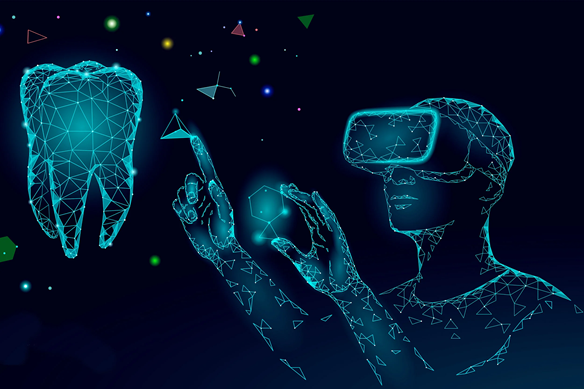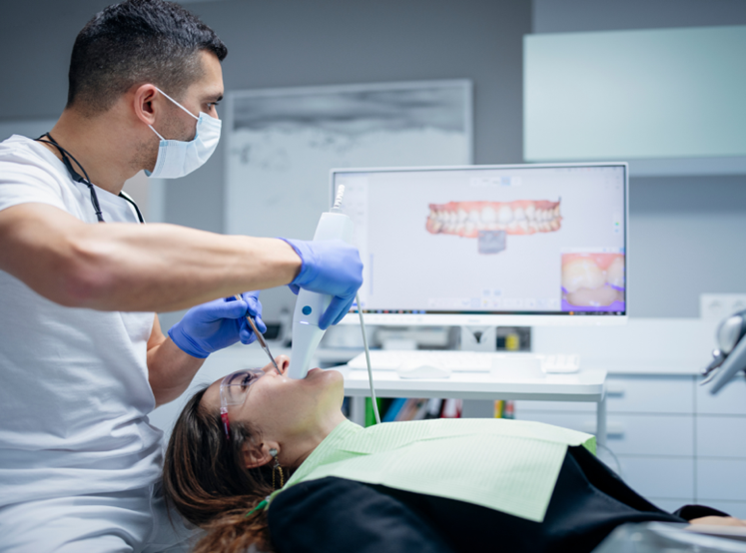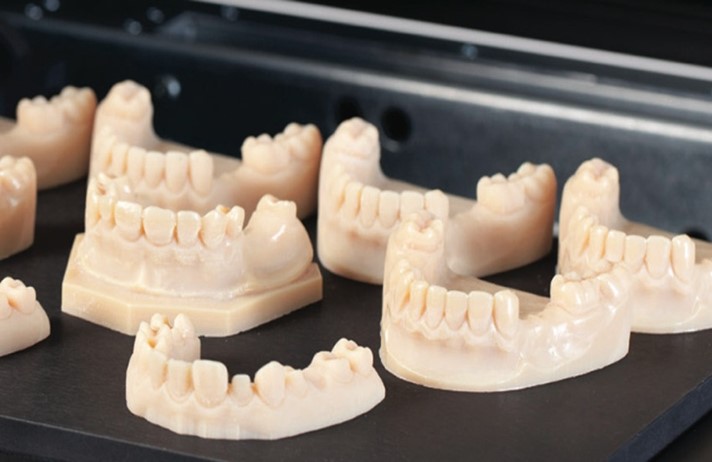
We can safely say that the influence of Artificial Intelligence in the world is becoming even more recognisable by the day. With new advances in technology like self-checkout and online shopping, what really is the need for expensive, time-consuming human labourers when there are cost-effective robots that do the job to an even higher degree of quality – it’s a no brainier right? Since this view is not shared worldwide, I will be exploring the benefits of artificial intelligence, but also the limitations which it possesses in a meticulous career like dentistry.
Since dentistry is a career which requires great attention to detail and precision, having aspects of Artificial Intelligence can definitely help to improve the outcome of certain procedures. For instance, in the process of manufacturing dental crowns, bridges or even dentures, the combination of Computer Aided Manufacture with Computer Aided Design will not only significantly reduce the time taken to create impressions for mouldings of the mouth, but it also increases the precision of the product, enabling it to be to be to a greater degree of care, ensuring the safety of the patient and the deliverance of better service to the population.
There have been many successful procedures which utilise CAD and CAM, such as in the field of Prosthodontics, where Artificial Intelligence is used to improve the design and creation of dental restorations. In the specialty of Endodontics, AI can be used in treatment planning and disease diagnosis, this enables better service to the population since a computer program ensures a higher degree of accuracy is going into detecting a piece of information on an image which can easily be missed by the human eye, according to Florian Hillen, the founder and CEO of VideaHealth, “AI-powered tools are now helping dentists identify dental decay in patients up to five years earlier” which further proves it to be a much more effective means of preventing disease in patients and ultimately improving their quality of life. The use of Artificial Intelligence in Prosthodontics also allows the delivery of “A well-fitting, aesthetic and durable implant for the patient.” (National Institutes of Health). The aesthetics of the final restoration is arguably equally as important as the function of the restoration since it determines how the patient interacts with their new implant. Having a well-fitted implant is beneficial to the patient because it provides a sense of comfort as well as a newfound sense of confidence, which advocates for the use of CAD and CAM in the dental field.
There are a variety of ways in which Computer Aided Design can come in handy when producing an appropriate tooth restoration, including the most popular method of 3D printing – and with good reason too. It can be used in the production of drill guides, for dental implants, the fabrication of physical models, for prosthodontics, and the making frameworks for implant and dental restorations. The traditional method of creating a dental impression involves the patient biting down on a putty-filled tray which is then sent to a dental laboratory, the final product can take several weeks to return, and it may even still may be subject to alteration. Opposed to the conventional method of creating dental impressions, the digital method is faster and evidently even more efficient. The process is comprised of using a handheld wand to capture photos of the patient’s mouth which is then transformed into a 3D model using Computer Aided Manufacturing.

The printing of the final model can be done using 3D printing; however, it possesses limitations which alludes to the difficulty of maintaining the sterilisation of the machine, putting the patient at risk of infection.
Overall, the field of dentistry is centred around patient care, so it is adamant that the dentist is an effective agent in providing an appropriate treatment plan pertaining to the problem presented to them by the patient. The dentist also has the role of providing support for the patient along the duration of the treatment process. Having said this, a good dentist-patient relationship is very effective because, the trust built between the two will not only boost the patient’s interaction with their dentist, resulting in a smoother treatment process, but the outcome of the procedure would be more rewarding to both the dentist and the patient. It can be difficult to create a trusting relationship between a patient and their dentist therefore making it very significant and influential for the patient’s decisions in their treatment process. With the contribution of AI in the field of dentistry, a stronger sense of confidence and trust can be created between a patient and their dentist, essentially advancing the field whilst also raising the patient’s treatment to an even higher degree of quality.

By Ogechi Umeadi